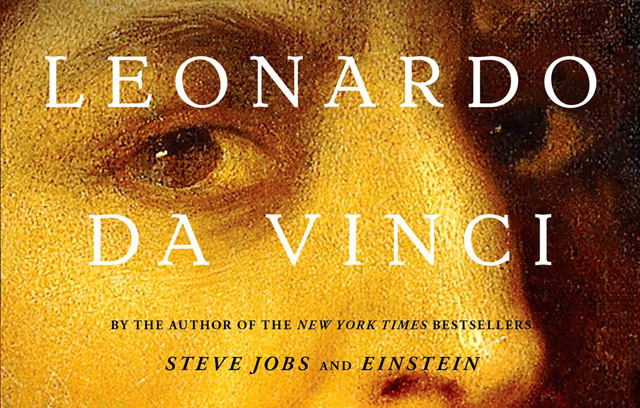Leonardo DiCaprio speelt Leonardo da Vinci in biopic
 Volgens Deadline heeft Paramount Pictures de rechten gewonnen op Walter Isaacson’s boek Leonardo da Vinci. Acteur Leonardo DiCaprio gaat de hoofdrol spelen in de biopic over het leven van de beroemde Italiaan. Tevens zal hij de film produceren, samen met Jennifer Davisson van Appian Way. Dat DiCaprio de rol van Da Vinci op zich neemt maakt een cirkel rond. Zijn moeder vertelde namelijk dat toen ze nog zwanger was van Leo, ze naar een schilderij van Da Vinci keek in de Uffizi Galerij in Florence. Dit was het moment waarop ze hem voor het eerst voelde schoppen.
Volgens Deadline heeft Paramount Pictures de rechten gewonnen op Walter Isaacson’s boek Leonardo da Vinci. Acteur Leonardo DiCaprio gaat de hoofdrol spelen in de biopic over het leven van de beroemde Italiaan. Tevens zal hij de film produceren, samen met Jennifer Davisson van Appian Way. Dat DiCaprio de rol van Da Vinci op zich neemt maakt een cirkel rond. Zijn moeder vertelde namelijk dat toen ze nog zwanger was van Leo, ze naar een schilderij van Da Vinci keek in de Uffizi Galerij in Florence. Dit was het moment waarop ze hem voor het eerst voelde schoppen.
Het boek van Walter Isaacson moet nog gepubliceerd worden, namelijk op op 17 oktober 2017. Isaacson schreef eerder Steve Jobs, die verfilmd werd door Danny Boyle in 2015. Tevens schreef hij de biografieën van Benjamin Franklin, Henry Kissinger en Albert Einstein. Laatstgenoemde vormde de basis voor National Geographic’s Genius, met in de hoofdrol Geoffrey Rush.
De officiële beschrijving van het boek is als volgt:
He was history’s most creative genius. What secrets can he teach us?
Based on thousands of pages from Leonardo’s astonishing notebooks and new discoveries about his life and work, Walter Isaacson weaves a narrative that connects his art to his science. He shows how Leonardo’s genius was based on skills we can improve in ourselves, such as passionate curiosity, careful observation, and an imagination so playful that it flirted with fantasy.
He produced the two most famous paintings in history, The Last Supper and the Mona Lisa. But in his own mind, he was just as much a man of science and technology. With a passion that sometimes became obsessive, he pursued innovative studies of anatomy, fossils, birds, the heart, flying machines, botany, geology, and weaponry. His ability to stand at the crossroads of the humanities and the sciences, made iconic by his drawing of Vitruvian Man, made him history’s most creative genius.
His creativity, like that of other great innovators, came from having wide-ranging passions. He peeled flesh off the faces of cadavers, drew the muscles that move the lips, and then painted history’s most memorable smile. He explored the math of optics, showed how light rays strike the cornea, and produced illusions of changing perspectives in The Last Supper. Isaacson also describes how Leonardo’s lifelong enthusiasm for staging theatrical productions informed his paintings and inventions.
Leonardo’s delight at combining diverse passions remains the ultimate recipe for creativity. So, too, does his ease at being a bit of a misfit: illegitimate, gay, vegetarian, left-handed, easily distracted, and at times heretical. His life should remind us of the importance of instilling, both in ourselves and our children, not just received knowledge but a willingness to question it—to be imaginative and, like talented misfits and rebels in any era, to think different.




